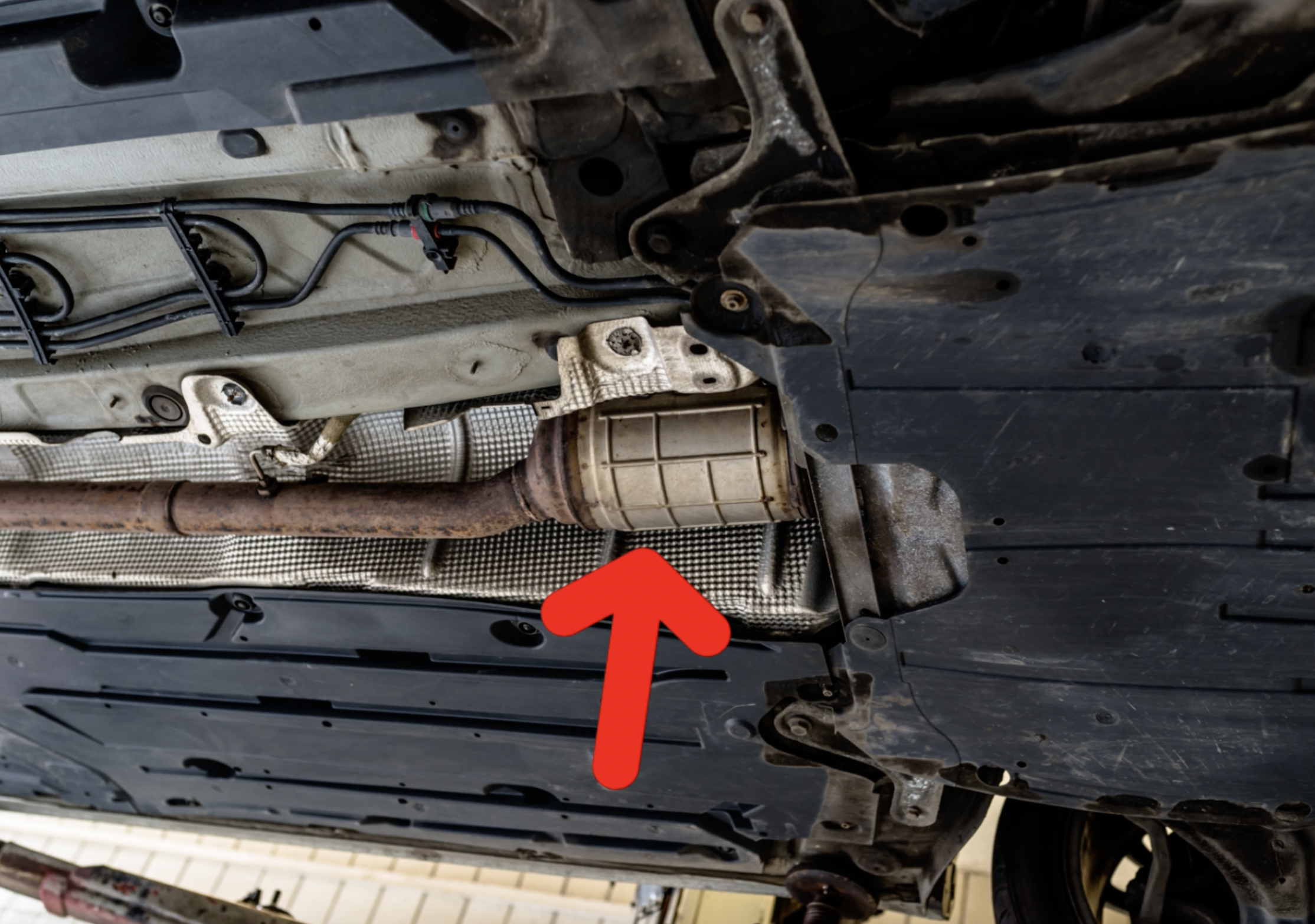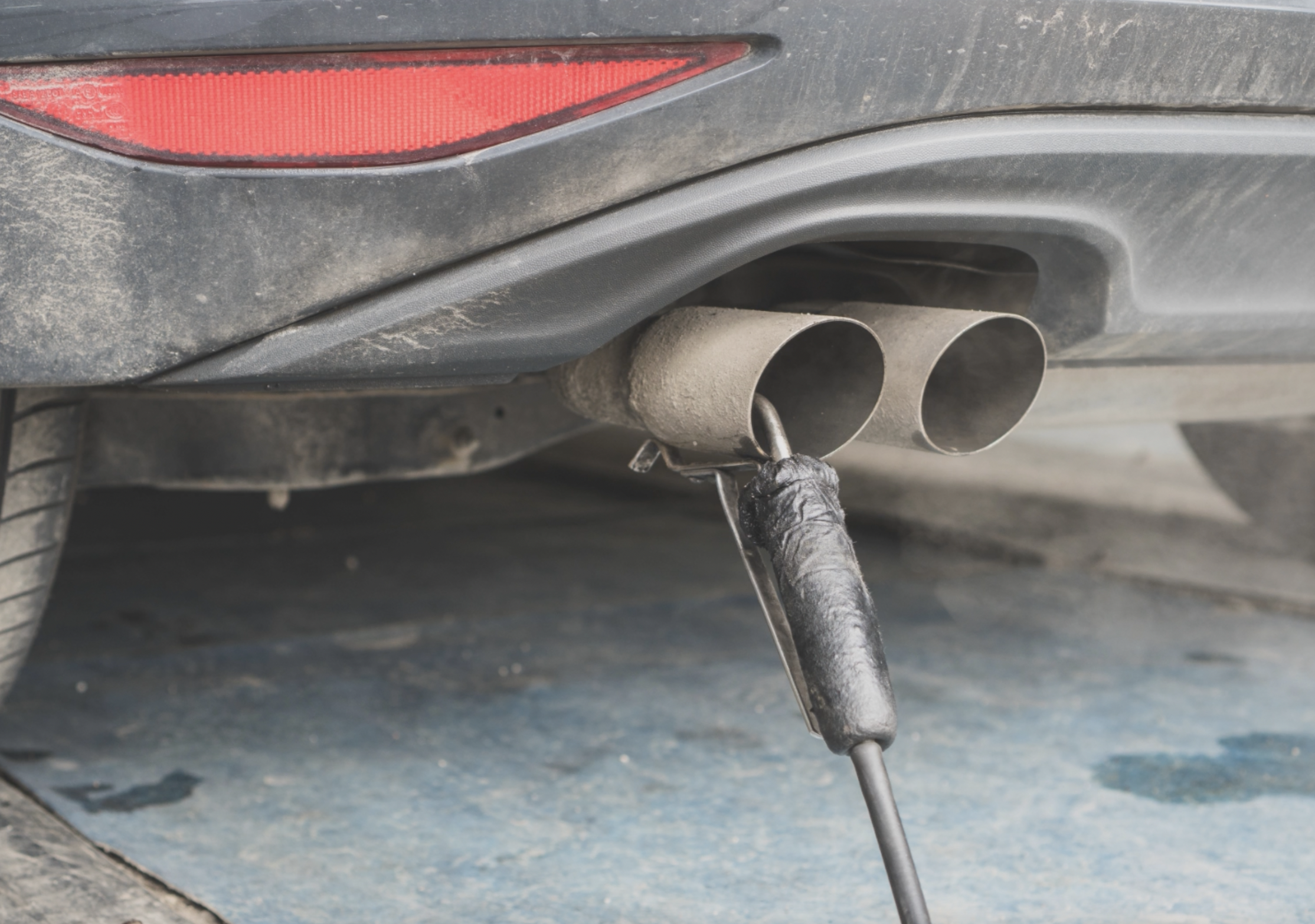SYMPTOMS OF A BAD CATALYTIC CONVERTER
purpose
The purpose of the catalytic converter is to convert harmful emissions coming from combustion into safer gases for the environment.
location
The catalytic converter will be located on the exhaust system (pointed with a red arrow).
symptoms
engine light
The first symptom of a bad catalytic converter is having an engine light on. Here are the codes related to a faulty catalytic converter:
P0420 - P0439
Ensure you can access your car's diagnostic codes by acquiring an OBD2 scanner here.
Sometimes, even if you have a bad catalytic converter, the ECM may not turn the engine light on, so keep reading this article to learn more about symptoms.
Egg smell
The second symptom of a faulty catalytic converter is your vehicle smelling like rotten eggs while you’re driving. If the honeycomb inside the catalytic converter is either broken or clogged, it won’t be able to convert the smelly gas called hydrogen sulfide into an odorless gas resulting in a rotten egg smell.
failed emissions
The third symptom of a bad catalytic converter is failing the emissions test. If the catalytic converter is faulty, it will never be able to convert harmful emissions to safer gases for the environment, resulting in your car failing the emissions test.
poor performance
The fourth symptom you might be experiencing is poor engine performance. Imagine, you’re at the red light, looking at your opponent, and when the light turns green, you floor it only to find out that you’re limited to 3000 RPM. This can happen if your catalytic converter is dirty or clogged. The reason why your car would lose performance is because of its inability to breathe out the exhaust gases. Since the exhaust gases can’t escape out efficiently through the catalytic converter, they will have nowhere to go but to stay in a combustion chamber. These gases will take up space instead of air, messing up the air-fuel ratio, which prevents perfect combustion.
rattling noise
The fifth symptom of a bad catalytic converter is a rattling noise coming from the catalytic converter. The rattling noise could be made by a broken-down honeycomb. This could be caused by a rich condition, meaning the air-fuel ratio was not correct, having more fuel than what was actually needed. This extra fuel gets kicked into the catalytic converter, increasing the temperature to the point where it breaks the honeycomb. This is why it’s super important to fix the problem right away to prevent the honeycomb from shattering.
Replacing a catalytic converter can be very expensive. If you suspect a clogged catalytic converter and want to save some money, try using this cleaning chemical first, instead of getting a new catalytic converter.
Check out my YouTube video!
Disclaimer: Some links in this article may be affiliate links.








